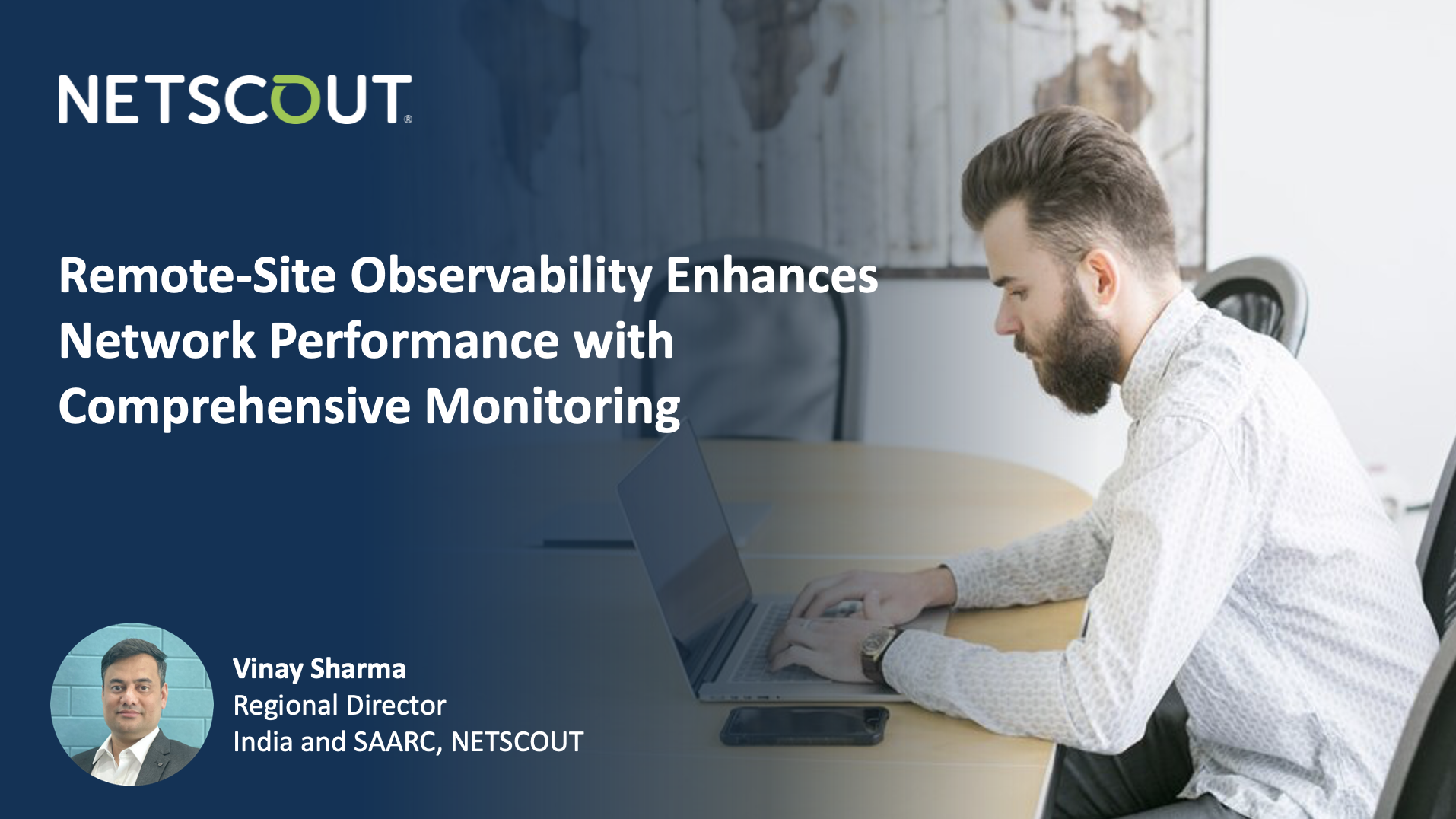Remote-Site Observability Enhances Network Performance with Comprehensive Monitoring - Vinay Sharma, Regional Director, India and SAARC, NETSCOUT

Organizations across sectors and sizes are adopting hybrid and remote work models in today’s digital era. With businesses continuously leveraging VPN, SASE, SD-WAN, SaaS, and UCaaS applications to facilitate work anytime, anywhere, and from any device, the IT teams are under increasing pressure to ensure their sound performance. However, the complex, modern environments that are distributed across different geographic locations create several challenges for IT teams in maintaining end-through-end visibility. Identifying and addressing problems promptly is rather difficult, putting immense pressure on the teams as they are required to troubleshoot and ensure faster mean-time-to-remediate issues that are rapidly impacting remote users. Besides these challenges, are the realities of digital transformations, cloud migrations, “As-a-Service” adoption, data center migrations, and software-defined network rollouts and complexities of modern enterprise that IT teams have to additionally manage. Such intricacies drive the need for robust instrumentation and Deep Packet Inspection (DPI), where data in each network packet is analyzed for security and performance insights. These techniques prevent visibility gaps and assure the performance of remote-site operations. For delivering high-quality and positive user experiences irrespective of which location users are accessing the network and applications, continuous performance monitoring is also very much required.
Remote-Site Observability across industries
It is
important to note that remote-site observability is required for managing the
performance, availability, and health of remote sites or branches within an
organization's network.
-
Healthcare: Remote-site
observability establishes the reliable performance of telehealth services and
enables remote clinic monitoring of device health and patient data. It also tracks the availability and usage of
medical equipment.
-
Financial Services: Here, remote-site observability supports
monitoring ATM networks and remote bank branches for performance and
security. It also tracks the processing
of the transaction and network connectivity while ensuring compliance across
multiple sites.
-
Insurance: Remote-site
observability helps companies in the Insurance sector by monitoring remote
claims-processing centers. It also
ensures reliable communication and data transfer between remote agents and
central offices. Tracking the usage and
health of telematics devices for auto insurance policies is made possible by
observability.
-
Utilities: Remote-site
observability involves monitoring the performance and remote substations and
powerplants in the utilities sector. It
also aids in detecting anomalies in pipeline pressure or water flows in
addition to ensuring the smooth functioning of smart meters and grid equipment.
- Retail: In this sector, remote-site observability ensures monitoring of point-of-sale systems and network performance across store locations. This ensures the availability and performance of digital signage and in-store WiFi. Tracking inventory levels and supply chain performance is also made possible with observability.
The essential tools for ensuring the security and integrity of networks and applications are continuous performance monitoring and DPI.
Growing importance of Packet-based performance
management
With the growing reliance on remote operations, IT teams face several challenges to ensure network and application performance can meet the requirements of distributed facilities and employees. Observability is the key where robust instrumentation and DPI are essential. DPI is a technique for analyzing the data in each network packet for security and performance insights that can fill in visibility gaps and assure network and application performance of remote operations. For organizations depending on remote operations, DPI empowers IT teams to get a granular view of the operational health of remote-site connectivity. Packet data helps to extract insights with precision, uncovering the root cause of issues. When packet data is intelligently analyzed, it delivers smart data enabling IT teams to assess their digital ecosystems accurately while proactively ensuring remote work experiences are optimized. Packet-based performance management will ensure holistic visibility and insight into the network, applications, servers, and user communities, rapidly addressing issues and reducing mean time to resolve (MTTR)
Attaining End-through-End Visibility
In today’s complex network environments spread across remote locations good connectivity is crucial to ensure employees, partners, and customers effectively collaborate and perform at their best. For this, IT teams must establish seamless digital interactions. To achieve this, end-through-end visibility is required where teams are empowered with the insights to prevent performance bottlenecks and cybersecurity threats that lurk in the digital shadows. This is made possible with a powerful Enterprise Performance Management solution where packet-based data is leveraged to generate Smart Data that the IT teams can use to navigate the complexities of troubleshooting across widespread remote work environments. The solution should cut through the noise and transform the difficult task of identifying performance issues into a streamlined process that is speedy and accurate as well. By leveraging the power of real-time performance insights, IT teams can address issues proactively before they turn into serious problems.
The
solution should help IT teams reduce mean time to knowledge (MTTK) by precisely
identifying performance issues and establishing uninterrupted and optimized
digital experiences for remote employees.
With more and more organizations depending on dispersed network
connectivity, the need for remote-site observability is growing too as the
future of business depends on it.



